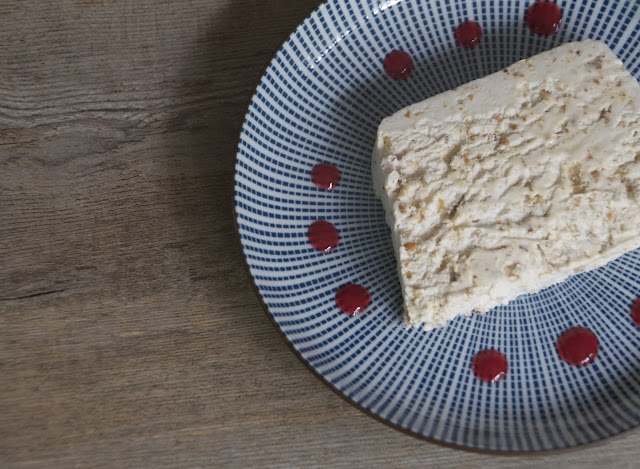When you put a cookbook out into the
world you hear from a lot of people you do not know. A new bride once
wrote that my recipes reminded her of desserts made by her grandmothers, but that sadly they had passed away before she could write
down their recipes. The Kosher Baker had helped her honor their
memory. Others tell me that they are the best bakers in their
communities, but that one of my recipes didn’t
succeed. I always write back and ask questions to get to the bottom of the
problem. Often
the culprits are extra large eggs when the recipe calls for large eggs, or
that they took the liberty of making three changes to the recipe and were
surprised that it didn’t work.
One complaint I have taken seriously
is from people who want to avoid parve margarine in their dairy-free
desserts. As a parve baker, I often use margarine, not the healthiest
ingredient. I cannot live without it to make fabulous piecrust,
shortbread and pastry cream. Oil just isn’t always a perfect substitute. My
grandma Sylvia lived until age 98 and she baked with trans-fat
margarine. I cannot make
everyone happy; no writer can.
I am writing to tell you that I hear
you. My new book, The Holiday Kosher Baker (Sterling 2013),
shows that I am moving in the healthier dessert direction. The new recipes use
more whole grain flours, less sugar and less margarine. I became so
disgusted with the medicinal taste of sugar substitutes that I avoided them altogether.
Notwithstanding this evolution, I
stand by my mantra that a healthy diet can include desserts, especially homemade ones. Yes, if you eat the entire loaf of chocolate babka (I
know who you are), then yes, that is consuming way too much margarine. But if
you stick to one serving, and I repeat, one serving, then you
will not become overweight on the basis of the babka alone. I have already shared on this blog my tactic
of the Three S’s: sweat, salad and Spanx, which together
allow me to taste the enormous quantity of desserts I produce without
becoming a rotund pastry chef.
Chanukah comes just once a
year. This week I am eating my latkes followed by sopapillas (recipe
below), delicious fried dough triangles topped with honey, sugar and
cinnamon. I still plan to still fit into my gown for my twins’ bar mitzvah
party in four weeks and I will even buy a new pair of Spanx for
the occasion.
Postscript: If you want a healthier
dessert this Chanukah, go to my posting at www.kosherscoop.com for instructions on
how to bake rather than fry doughnut holes and to see my recipe
for cinnamon doughnut holes with a caramel dipping sauce.
Sopapillas are
common in Central and South America and are pieces of dough that puff up when
fried. I
first tasted them slathered with honey and powdered sugar on a trip to Sedona,
Arizona. Sopapillas are a
nice change from doughnuts
and as each piece is smaller than a typical
doughnut, I feel that I am satisfying my fried dessert fix with a smaller
portion.
Serves 8
2 cups all-purpose flour, plus extra for dusting
1 teaspoon baking powder
½ teaspoon salt
2 tablespoons solid vegetable shortening
¾ cups soymilk or water
2-3 tablespoons confectioners’ sugar
3 tablespoons honey
¼ - ½ teaspoon cinnamon
canola oil for frying
Place the flour, baking powder and salt into a large bowl
and mix with a dough hook for a few seconds. Add the shortening and soymilk or
water. Mix until the dough comes together into a ball, scraping the dough off
the hook a few times and turning it over, until the dough is smooth. Cover the
bowl with plastic wrap and let the dough rest for 20 minutes.
Heat 1½ inches of oil in a medium saucepan over medium-high
heat and use a candy thermometer to see when the oil
temperature hovers around 375°F.
Sprinkle some flour on a large piece of parchment paper and
use a rolling pin to roll out the dough until thin. You can cut the dough
into any shapes you like. I cut 3-inch wide strips and then cut each strip into
squares. I cut each square into two triangles. I used a fluted pastry wheel to add the pretty ridges to the edges of the triangles.
Place a wire rack over a large cookie sheet covered with
aluminum foil. When the oil temperature is ready, fry six triangles at a time until
golden, about 1¼ to 1½ minutes per side. Use a slotted spoon to lift up the
sopapillas, allowing the excess oil to drip off, and place on the wire rack to
cool. Make sure the oil temperature returns
to 375°F
before you add the next batch. Sometimes I have to lower the flame and wait a
few minutes until the temperature cools to 375°F.
To serve, drizzle honey over the sopapillas and use a sieve
to dust generously with the confectioners’ sugar. Sprinkle cinnamon on top
and enjoy. Store covered at room temperature for up to two days. May be
reheated.















